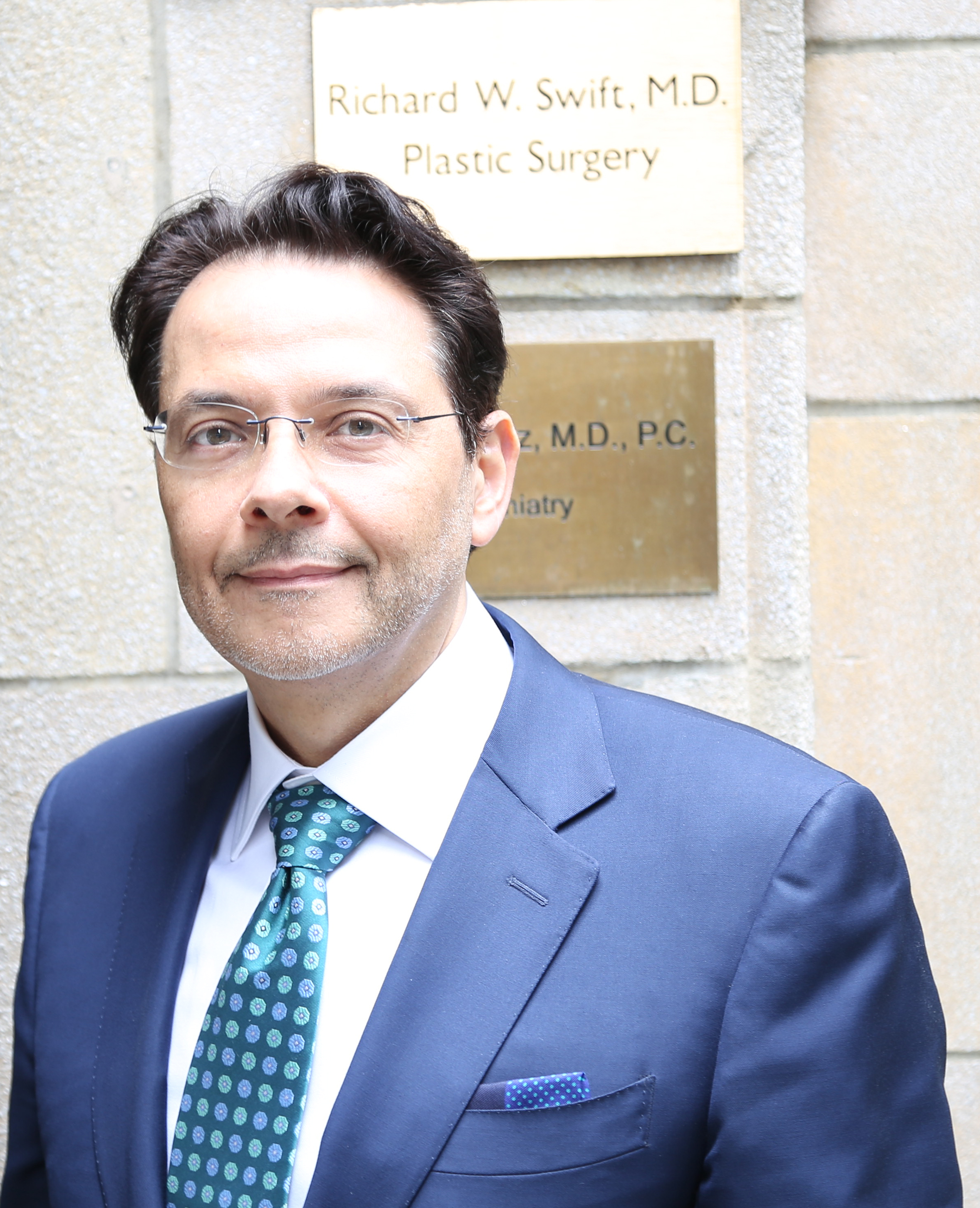When patients land in a dermatologist’s office, frustrated with a line or fold, they often want to plump the offending crease with filler. See a wrinkle, fill a wrinkle.
In his Upper East Side practice, Dr. Richard Swift, a plastic surgeon, sees more than 100 people for fillers every month. For many of those patients, his filler technique is surprising.
“One woman came to me with jowls,” Dr. Swift said. “I explained I’d start injecting the cheek area to correct the sagging in the lower face. She stopped me: ‘Whoa, why are you injecting up there when the problem’s down at my jawline?’ I asked, ‘How did you look when the last surgeon injected you with five syringes of product in your lower face?’ She answered, ‘Like a bulldog.’”
He filled the cheeks. She left happy.
Dr. Swift’s approach is sometimes called anatomic filling: replacing volume (with injectables like Juvéderm, Radiesse and Restylane) where it has been lost to restore the overall youthfulness of the face. Doctors have stopped looking at wrinkles and sagging skin in isolation and are considering how volume loss in one area affects others.
A young face has the “triangle of youth,” meaning it is broadest at the cheeks just under the eyes and narrower at the chin. But over time, tissue and bone is lost midface. With a deflated support system, skin starts to sag, and the face slowly transforms from triangle to trapezoid. Jowls form.
Fillers counteract that aging process by adding fullness to the cheeks, which restores skin to its original position, softening nasolabial folds (smile lines), marionette lines (creases running from the corner of the mouth to the chin) and jowls.
“I photograph patients from every angle,” said Dr. Jeannette Graf, a dermatologist in Great Neck, N.Y., and Manhattan. “I show them the pictures and say: ‘When you inject on top of the outer cheekbone, it has a lifting effect that tightens up the droopiness in the lower face. That’s how we do things now.’”
Doctors will note that in some patients, nasolabial folds still require direct injections. “But I start in the midface,” Dr. Swift said. “That’s where most of the work happens.”
The cost of fillers is substantial.One syringe of Juvéderm Voluma, a product now commonly used on the cheeks, runs $700 to $1,200 in New York, with price variations depending on neighborhood and the doctor’s experience. A mild case of laugh lines can be corrected with one or two syringes. Severe volume loss could require four or more.
And there are limits to what fillers can do. Think of the neck as a litmus test. If it’s very loose or banded, fillers won’t help. Also prohibitive: inelastic skin. For fillers to work, they must have some structure to push against. Skin lacking collagen and elasticity, like severely sun-damaged skin, won’t lift.
“In my experience, using filler to correct drooping skin in somebody who already has prominent cheekbones is reasonable for about a year and a half or two years,” said Dr. Michelle Yagoda, a plastic surgeon in Manhattan. “After that, the pocket where the filler was placed stretches. Then to achieve the same look, doctors will inject more product. You start seeing cheeks that are very prominent compared to the lower face.”
Dr. Yagoda suggested deciding on an aging-intervention plan for 10 to 20 years out. “You might have to consult a facial plastic surgeon and a dermatologist to get the best mix of noninvasive and surgical options,” she said.
Doctors often credit Botox, the muscle-relaxing neurotoxin, as the facial aesthetics game-changer. “For the first time, doctors from different disciplines — plastic surgeons, dermatologists, ophthalmologists — were working together,” Dr. Graf said. “We learned from each other how the facial muscles work and how the face changes with aging.”
Dr. David E. Bank, a dermatologist in Mount Kisco, N.Y., uses thinner hyaluronic acid fillers, like Restylane Silk and Belotero, to improve skin texture and boost radiance.
“Most injections are done below the level of the skin, oftentimes sitting on top of the bone, but these thinner fillers can be injected superficially into the dermis,” Dr. Bank said. “There’s an immediate hydrating effect because hyaluronic acid is so good at grabbing water to itself. But there’s also a delayed effect, a slight inflammation that stimulates your collagen-producing cells, so that perhaps after a couple treatments, you don’t need filler anymore.”
Doctors also use fillers off-label to add volume to the temples. To lift drooping eyelids, Dr. Bank injects Restylane into the forehead. “There isn’t much fat there to begin with, but when it thins, the eyebrows and the eyelids fall a bit,” he said. “Filling the forehead recreates convexity to support the eyebrows.” Plastic surgeons also inject fillers to reshape the bridge of the nose and simulate the effect of a chin implant.
In her New York cosmetic dentistry practice, Dr. Pia Lieb offers a niche lip-plumping procedure. “People were paying all this money to get veneers but getting bad lip filler, so I decided to start doing it myself,” Dr. Lieb said. She injects filler inside the mouth, where the interior smooth skin meets the outer skin of the lips. She says the technique “rolls out” the lips for natural-looking fullness.
“Dentists are trained to inject inside the mouth, and with filler that yields better results than filling the outside of the mouth, which is what most doctors do,” Dr. Lieb said.
People lose collagen all over the body, not just in the face. But fillers currently available in the United States lack the density needed for body work. Macrolane, a viscous hyaluronic filler in the Restylane family, has been popular in Europe for body enhancement for several years. The future of such fillers here is directly tied to the trickle of approvals by the Food and Drug Administraion. As new formulas become available, doctors find ways to use them.
“Think about the skin of the upper arms that hangs like bat wings,” Dr. Bank said. “To restore that, you could use Macrolane to coat the muscle all the way around, like blowing up a tire.”







